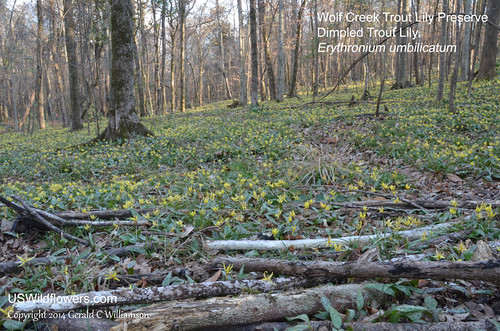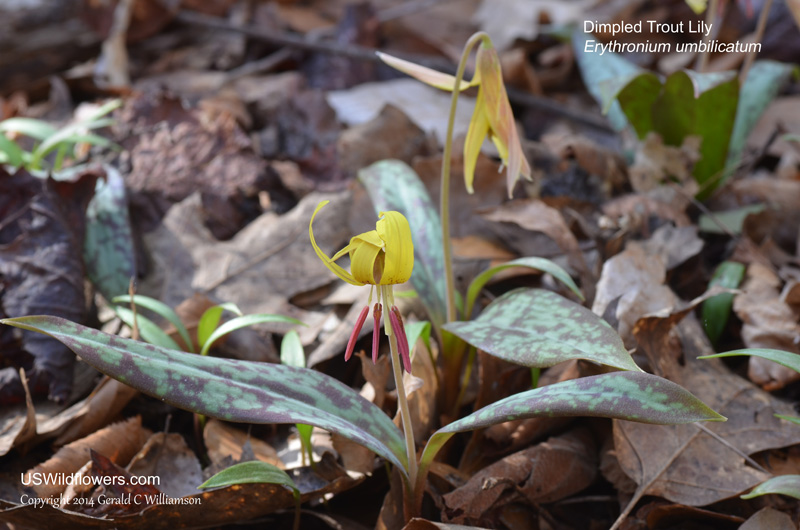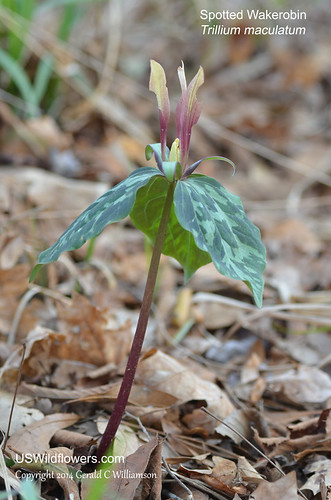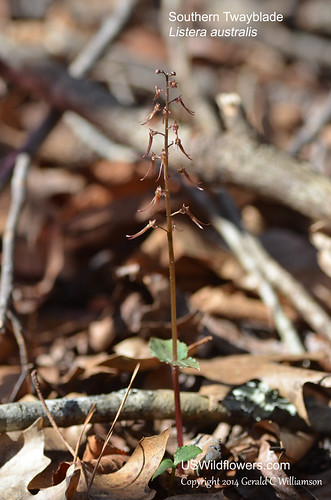Wow! If you like Trout Lilies (what’s not to like about Trout Lilies?) then… Wow! Wolf Creek Trout Lily Preserve is home to the densest population of Trout Lilies in the world. Arrive there at peak bloom – usually early February, but with the cold late winter we’ve had in the southeast, mid-February this year – and you too will be amazed at the carpet of yellow blossoms in a 40 acre patch of forest along the slopes down to Wolf Creek in Grady County, Georgia.
But there’s more…
The Wolf Creek Trout Lily Preserve was slated for a housing development; it was saved from that fate in 2009 through the work and contributions of many individuals and the Florida Native Plant Society, the Georgia Native Plant Society, and the Georgia Botanical Society. It is now owned by Grady County, and I think it is more or less managed by the Florida Native Plant Society, Magnolia Chapter. A more full history of this preservation effort can be found at the Wolf Creek Trout Lily Preserve website. Directions and and other pertinent information can be found at that website, so I won’t go into that any further. Instead, here are some photos and information on some of the plants I saw during the several hours my wife and I spent there on Feb 19 and Feb 20, 2014.
The preserve’s namesake plant is, of course, a Trout Lily. Fortunately the folks managing the property have put up some signs (the signs look seasonal) identifying various plants to the species – otherwise I would probably have been unable to differentiate Dimpled Trout Lily (Erythronium umbilicatum) from among the similar Erythronium species. Below is one of millions that bloom at this site.
The other “signature species” of Wolf Creek Preserve is Trillium maculatum – Spotted Wakerobin. Once again, the signs and website information saved me a lot of time trying to identifying this sessile Trillium species. They normally have maroon petals and sepals, maroon stamens, and with the deeply mottled bracts (what are usually called leaves) that give the plant its specific epithet, as seen in the next photo.
There are several color forms of Trillium maculatum, and below is a photo of one with burgundy / yellow petals and yellow stamens. This particular specimen doesn’t match any of the three forms for which I’ve found descriptions.
There are at least four orchids that can be found on this property, but only one was blooming while I was there. This is the tiny Southern Twayblade, Listera australis. The others are Green Fly Orchid, Cranefly Orchid, and Spring Coralroot.
Blooming both in the forest and around the parking area are Elliott’s Blueberry – Vaccinium elliottii. These plants were nearly naked except for the blossoms and a few small nascent leaves.
Finally, as I was getting ready to leave I noticed a flash of yellow from the very top of a tree that was standing about 30 feet off the northern edge of the parking area. I grabbed my 400mm lens and took the following (and a few other) hand-held photos (using that as an excuse for the quality of the image.) A zoom in on the photo revealed that it was the highly poisonous Yellow Jessamine, Gelsemium sempervirens.
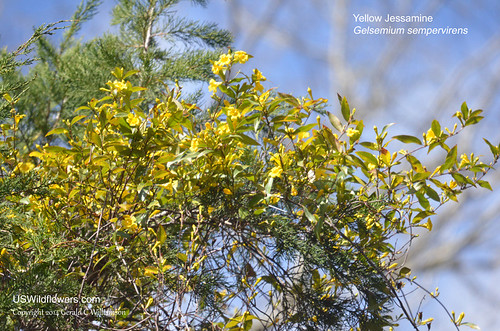
Yellow Jessamine – Gelsemium sempervirens – Also known as Carolina Jessamine. I guess the further you get from Carolina the more likely it is to be known by another common name.
With the exception of two of the orchids which weren’t yet blooming, all of these plants were “lifers” for me – pretty exciting. It should be noted that all of these are native plants.

